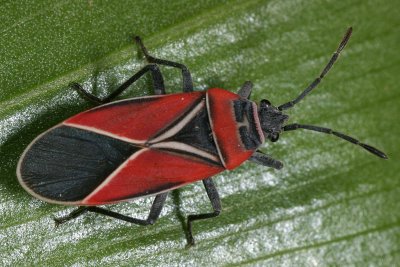Biology's Merrill Peterson Writes New ‘Pacific Northwest Insects’ Field Guide
As an 11-year-old growing up in Seattle, Western Washington University Professor of Biology Merrill Peterson was absolutely captivated by insects.
By the time he was a teenager, he was regularly attending entomological meetings and going on collecting expeditions with mentors that included Jon Pelham, curator of butterflies at the University of Washington’s Burke Museum, and Sharon Collman, one of the founders of the national Master Gardener program.
Dozens of years and thousands of hours of work later, Peterson has just had his new comprehensive 528-page field guide, “Pacific Northwest Insects,” published by Seattle Audubon and distributed by UW Press in the United States and UBC Press in Canada. It is the first of its kind to enable readers to identify insects down to the species level.
“The scope and the amount of work was quite daunting,” Peterson said. “It was an incredibly large project.”
The book showcases about 1,200 regional insects, and mentions ways to identify a few thousand more. Peterson took about half of the 1,700 photographs in the book. Though this is still only a tiny slice of the 30,000 insect species that have been catalogued in the region, from tiny wasps the size of a pinhead to huge tiger moths, Peterson’s experience from studying the region’s insects, teaching entomology, and identifying insects for the public helped him focus on the subjects that are most likely to be of interest.
“My goal in writing this book was simply to connect people with nature,” he said. “My hope is that folks will use this book to confidently identify insects and that the knowledge of what the insects are and how they live their lives will give them a better understanding and appreciation of the incredible world around them.”
Peterson began visualizing the book when he was on a sabbatical year in 2004, doing work on a National Science Foundation-supported project in Germany. He had begun to feel that his career was becoming increasingly focused on an ever-tighter, more focused thread of research.
“I was going down a rabbit hole. My work was becoming more and more narrow, and I realized that I was losing the love of what got me into biology in the first place,” he said. “So I began thinking of what a project would look like that would be a really unique contribution … and the idea of the book took shape.”
Peterson began working nights, weekends, and winter, spring and summer breaks on the book. Family vacations over the next decade always included an insect-collecting adventure, and he drove tens of thousands of miles around the Pacific Northwest looking for insects to photograph.
He crawled around a sphagnum bog in North Bend looking for Beller’s ground beetles (he found them; see page 210), scoured the desert scrub of the Columbia Basin looking for Western short-horned walkingsticks (he found them, too; see page 103), and even stalked North Cascades snowfields at night under the glow of a headlamp looking for ice crawlers – nocturnal insects that look a bit like a snow-dwelling earwig (no dice; he had to get an outside photo for that one).
“You can’t find ‘em all,” said Peterson, the chair of the Biology Department at Western, although he has certainly tried -- noting that a field guide like this wouldn’t have been possible before digital photography.
“Shooting an insect and waiting for the film to be developed to see if it came out or not just wouldn’t have worked.”
Some bugs proved so elusive that he set a “bounty” on them, and gave his WWU entomology students extra credit on their insect collections if they brought him a live specimen he could photograph.
Through his pursuits, Peterson discovered several species far from their known ranges, including an invasive spruce-feeding sawfly species that had never before been found west of the Rockies, and an introduced moth from Europe that is a species of conservation concern in large parts of its native distribution.
The guide is divided into major sections by broad insect groups such as butterflies and moths, beetles, grasshoppers, ants and bees and their kin, etc., and also includes a section on arachnids such as spiders and scorpions.
All of the line drawings to start each section, showing a typical insect of that type, were done by his daughter Emiko Peterson-Yoon, a BFA grad from the University of Washington; and a former student of Peterson’s at Western, Jennifer McNew, produced the regional maps for the introduction section.
And now, 14 years and an estimated 10,000 work hours after he started -- and a lifetime away from collecting bugs on weekend trips with the entomological mentors of his childhood -- Peterson’s vision of a project that would reconnect him to the natural world while being of service to fellow naturalists has come to fruition.
“Part of me still can’t believe it’s really done,” he said. “It’s been a lot of fun.”
“Pacific Northwest Insects” is available at bookstores and libraries throughout the region, through UBC Press and UW Press, through Seattle Audubon’s online Nature Shop, or on Amazon. For more information about the book, visit the book’s website, www.pacificnorthwestinsects.com, or contact Peterson at Merrill.Peterson@wwu.edu.



